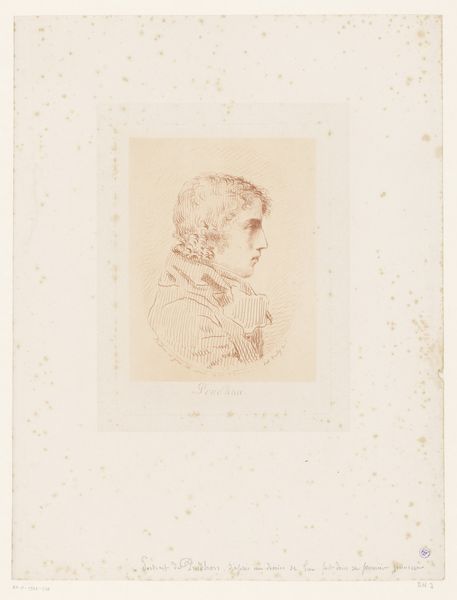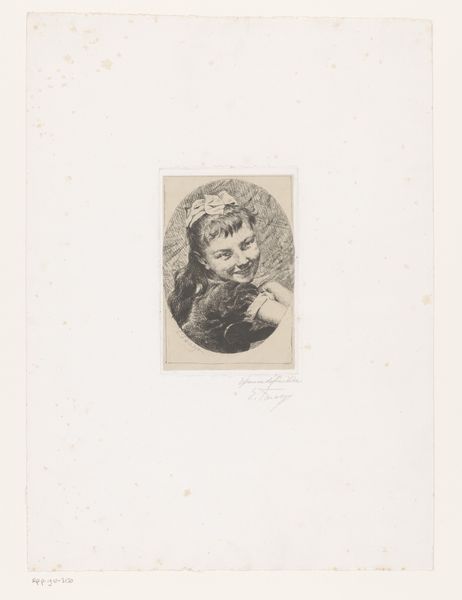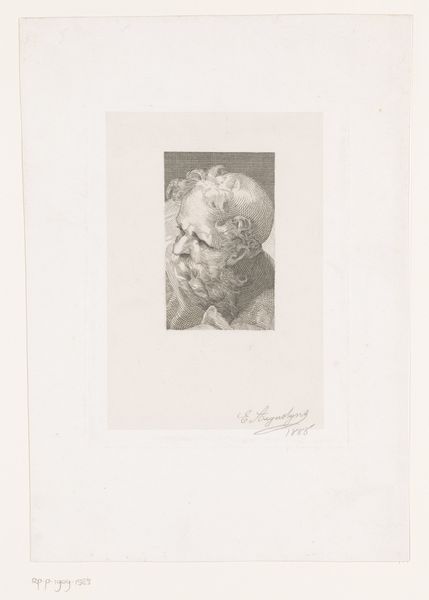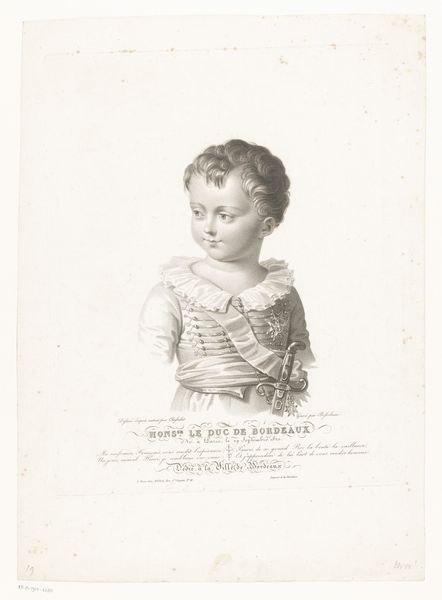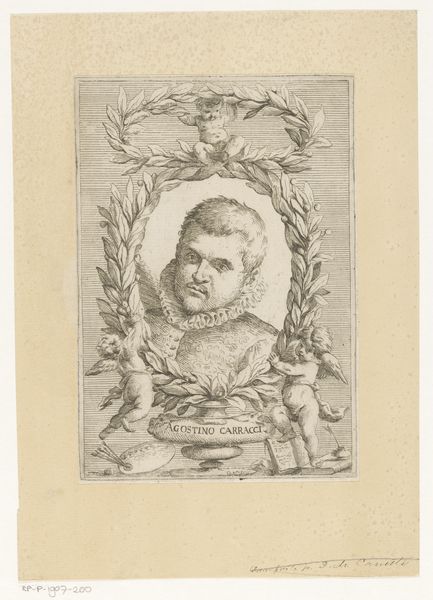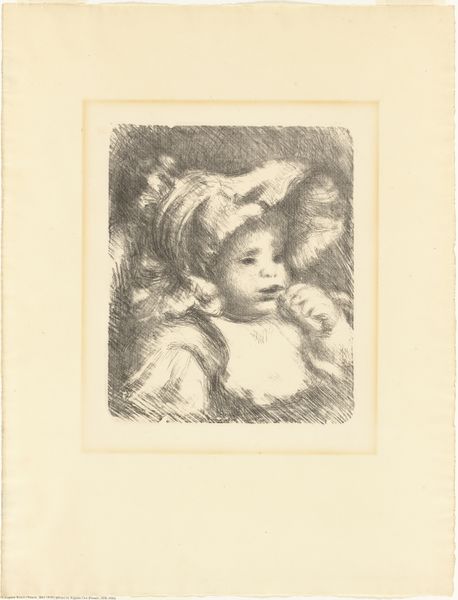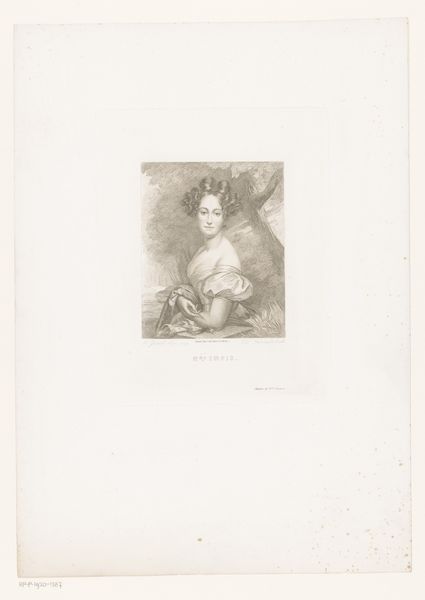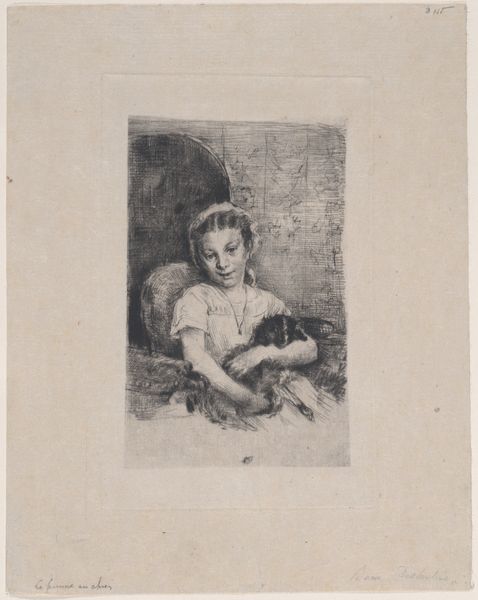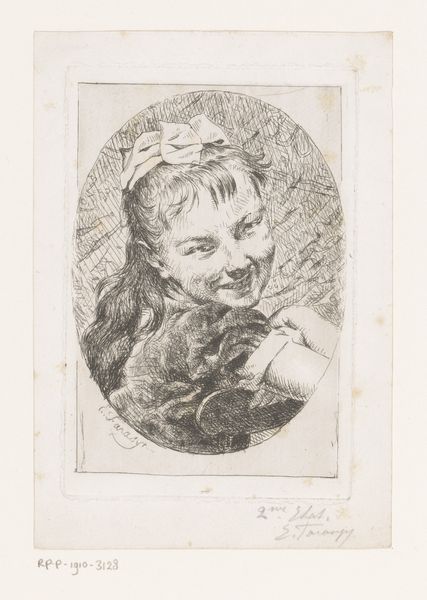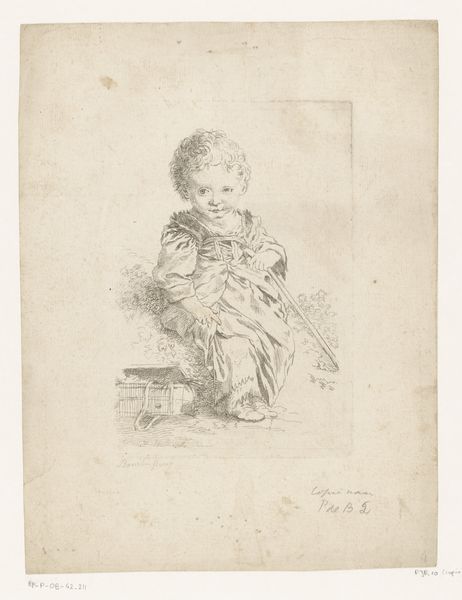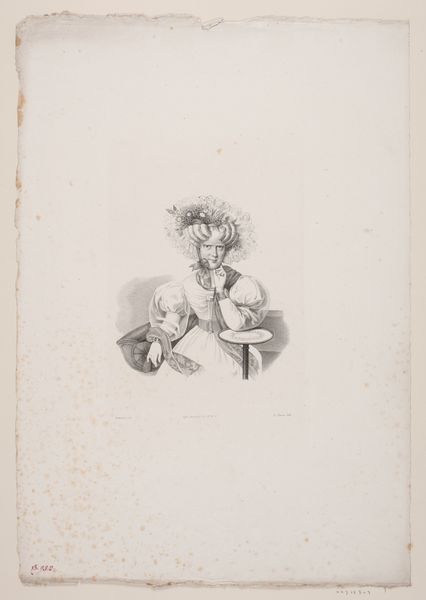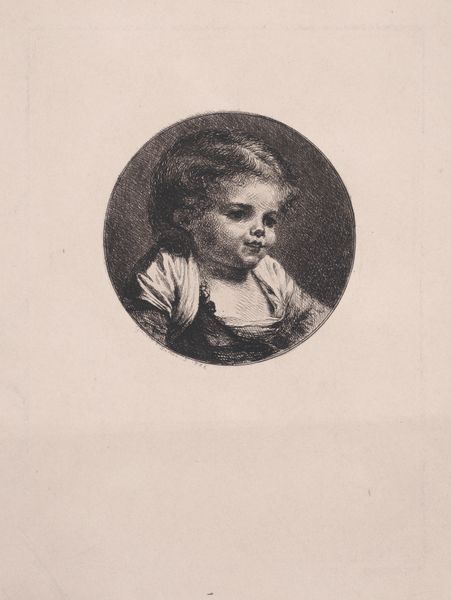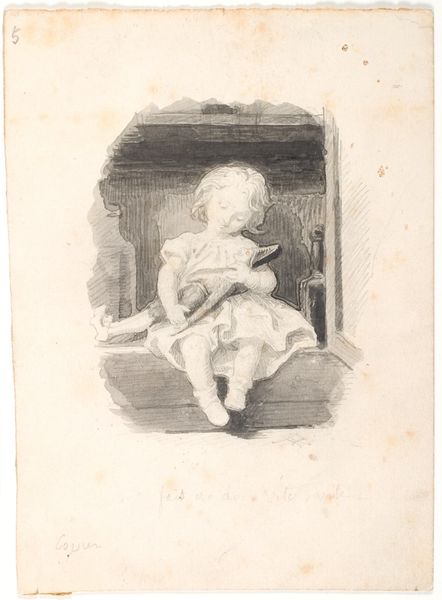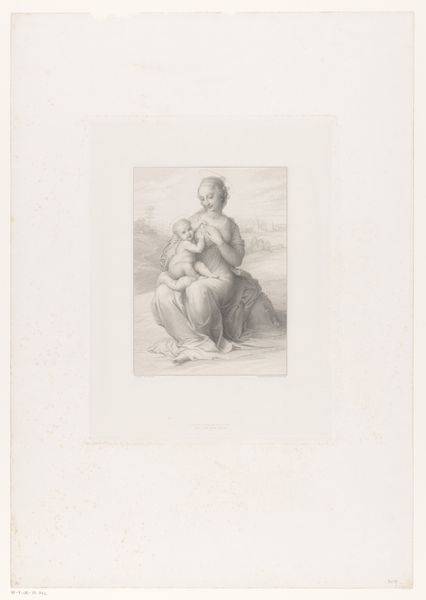
drawing, print, etching, paper
#
drawing
# print
#
etching
#
paper
Dimensions: height 150 mm, width 100 mm
Copyright: Rijks Museum: Open Domain
Editor: Here we have Edgard Farasyn's etching, "Portrait of an Unknown Laughing Girl," created sometime between 1868 and 1910. The delicate lines give her such a lively, almost mischievous expression. What stands out to you as you look at this print? Curator: What strikes me is how Farasyn is choosing to represent childhood. Think about the socio-political context. As public education expands in the late 19th century, childhood becomes seen less as a period of labor and more as one of development. Do you see echoes of that shift here? Editor: Absolutely. There's a sense of freedom in her laughter, and in the somewhat loose etching style, that suggests a childhood being valued. It’s not a formal, stuffy portrait. Curator: Precisely. And consider the role of portraiture at this time. With the rise of photography, painted and etched portraits needed to offer something more: personality, psychological depth. Do you think this etching achieves that? Does the ‘unknown’ nature of her make it even more relatable? Editor: Yes, definitely. It feels less like a commission and more like a study of pure joy. Her anonymity gives it a universality, like she could be any happy child. I guess there is this sense of an informal intimate exchange being valued! Curator: And that’s powerful, isn’t it? The market for art became democratized in the nineteenth century and as more works are reproduced through prints like these, more and more public viewings, didactics, discussions, even education becomes involved to help create a more involved public. Farasyn, perhaps intentionally or unintentionally, encapsulates these values! Editor: That's fascinating! It completely changes how I see the image, not just as a portrait but as a social statement. Curator: Indeed, art rarely exists in a vacuum. This quick glimpse into the life of an ‘unknown laughing girl’ helps us also question how much did the artwork reflect the times, or how much did the society want to re-present or maybe mis-represent to its public!
Comments
No comments
Be the first to comment and join the conversation on the ultimate creative platform.
